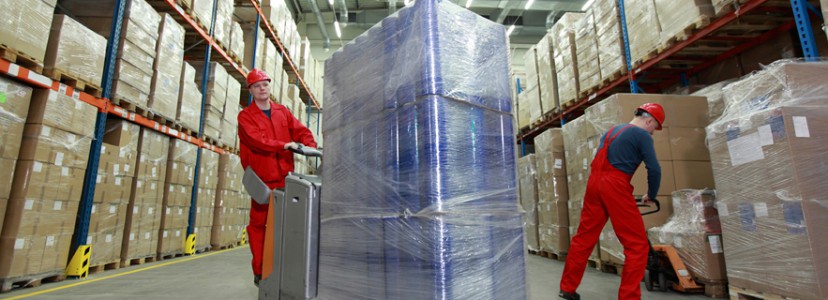The importance of pallet optimisation to your warehouse

High volume dispatch operations are likely to be sending out numerous loaded pallets every day. To get best value on your transport costs, and to ensure your pallet has been loaded safely, it is advisable to use cartons that can be stacked safely together and which make best use of the pallet space available.
These should be useful enough benefits on their own, but such an approach is also highly time effective, as it allows your packing team to load a pallet more quickly as well.
In short, adopting an organised approach to your palletisation can save your business time and money and make for a safer working environment.
What is pallet optimisation?
Pallet optimisation is a key part of logistics management, and is the art of planning and building a pallet so that it makes best use of the available pallet footprint, and best use of the available truck or container space in which it is to be transported.
The first step to ensuring best use of your pallet space is to ensure you’re using a consistent size. Many companies reuse pallets in an uncoordinated way, so that it makes optimising them impossible. Standard pallets come in the following sizes: 1200 x 1000mm, 1200 x 800mm and 800 x 600mm.
Which one you choose to use will naturally depend on the size of your product and the cartons in which you’re packing it. If you’re dispatching multiple products of different size, try to achieve as much consistency in your cartons as you can; where there is variance, keep it to a minimum, and if space allows, pack in a separate area.
Pallet optimisation to save time
Trying to load a number of different cartons onto a single pallet can be a time consuming business, as your operators try to find the best way of combining them to ensure a stable load that fills the pallet to its optimum capacity.
Using the same size cartons and ensuring that your operators know how to best load them can therefore speed up dispatch work quite considerably.
Even before then, using consistent cartons can also mean faster packing, as operators don’t have to spend time trying to choose the right one for each order.
Pallet optimisation for lower costs
The chances are that what you’ll be paying for your shipping will be based on the number of pallets you dispatch and/or the number of trucks or containers that are required to transport them. Keeping both to a minimum can therefore potentially represent a significant saving.
The balance you’ll be trying to find is that between using the best carton for your product, with as minimal use of void fill as you can get away with, and using one that fits snugly onto a standard pallet. It may be that by using consistent cartons across different products, you’re sometimes using more void fill than may seem necessary; however, if those cartons are making better use of your space, that could more than offset such an extra expense.
Pallet optimisation for safer loading
The other way pallet optimisation can be important to the way your workplace operates is that you can plan stacking to ensure your pallet is safe. Using multiple cartons and stacking them in an uncoordinated manner is more likely to lead to an unstable load – and even if you manage to secure it in place with pallet wrap in your own work area, there is likely to be some shift in transit, leading to even greater instability, meaning that whoever opens the pallet at its destination point could be at significant risk of injury.
Getting started with pallet optimisation
Some packaging suppliers will be able to supply you from stock with boxes that have been specially sized for standard pallets. Don’t forget that these will only be categorised by pallet footprint, as there is no standard height to which pallets should be made. Check with your courier or Transport Manager to get the precise sizes within which you need to work.
Of course, the most cost effective way is to work out what size carton would work best for you, and if it isn’t available as a stock item, you can easily get them manufactured to your exact specification. Remember that it’s not just the size you need to worry about – work out the maximum weight the cartons will be expected to hold and what the maximum weight likely to bear down on them if they’re at the bottom of your pallet.
Any good cardboard box manufacturer and supplier should be able to help you choose the right grade of board to do the job.
Rick Stanford
Latest posts by Rick Stanford (see all)
- Davpack’s Top Tips for Secure Strapping - 7th September 2022
- The Paper vs Plastic Bubble Wrap Debate - 10th August 2022
- Save Money with Royal Mail Sized Packaging - 8th July 2022
